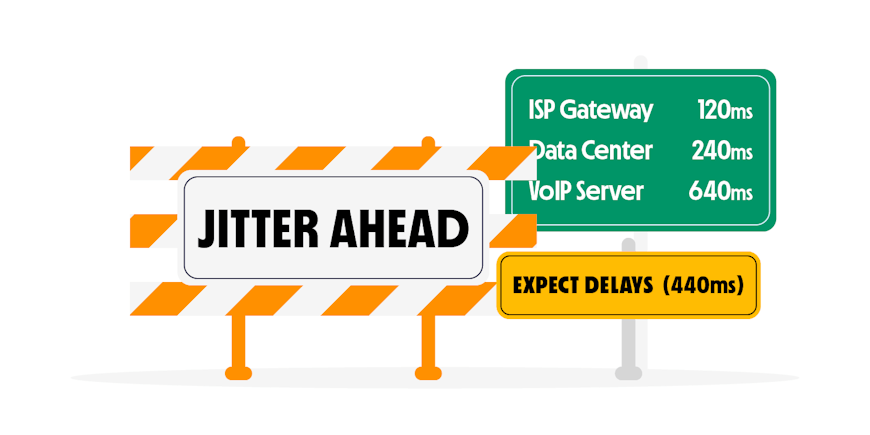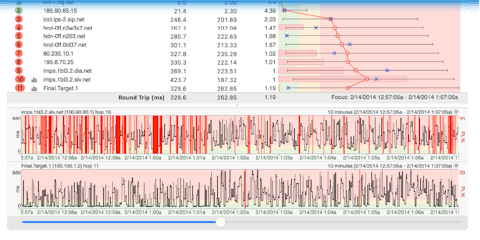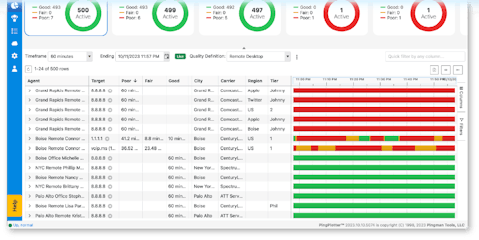When Remote Internet Undermines your Agents, Everyone Loses

Remote internet issues aren’t just a tech hiccup—they’re a business risk. According to Gartner, contact center attrition rates can exceed 40% annually, and replacing a single agent can cost up to 50% of their annual salary. With more agents working remotely than ever before, one hidden but powerful driver of churn is unreliable home internet. Dropped calls, lagging CRMs, and poor voice quality don’t just damage customer experience (CX)—they erode agent experience (AX), motivation, and performance. And in a labor market where great agents are increasingly hard to find (and even harder to keep), protecting AX is every bit as critical as delivering excellent CX.
The hidden link between remote internet and turnover
Imagine you’re a remote agent handling a high-volume queue. Suddenly, your internet lags. You can’t hear the customer clearly, your CRM freezes mid-case, and by the time you recover, the customer has hung up angry. The customer isn’t the only one who suffers. The agent knows they’re being judged on metrics—average handle time, first-call resolution, CSAT—that are now out of reach for reasons completely outside their control. They’re apologizing for problems they didn’t cause, taking the blame for KPIs they can’t fix. Day after day, that kind of stress erodes confidence and motivation. Over time, it drives good employees out the door.
Great CX starts with great AX
There’s a direct line between how your agents feel and how your customers feel. Engaged employees deliver better CX. Disengaged, stressed employees don’t.
When remote agents are stuck battling poor internet connections, they spend less energy on empathy, problem-solving, and upselling—and more energy on simply surviving the shift. Worse still, managers who lack visibility into remote network conditions often misdiagnose the issue. A frustrated agent struggling with packet loss may be labeled as “unmotivated” or “needing coaching.” Instead of fixing the root cause, the company spends resources in the wrong place, compounding the problem.
Empowering agents with the right tools
The solution to internet-related performance issues isn’t just faster troubleshooting after outages—it’s proactive visibility. When managers can clearly see the health of a remote agent’s network, they can distinguish between a coaching need and a connectivity issue before the damage is done. With real-time data on internet performance, managers can:
- Identify which agents are experiencing degraded internet conditions—before calls drop or metrics slip.
- Temporarily pull affected agents from the queue, avoiding hits to Average Handle Time (AHT), First Call Resolution (FCR), and Customer Satisfaction Score (CSAT) while protecting morale.
- Equip agents with objective, actionable data they can share with their ISP or use to improve their home setup.
This visibility closes a critical gap. Without it, agents get trapped in a demoralizing loop: their tools fail, their KPIs drop, and they’re held accountable for problems outside their control. Over time, that stress leads to disengagement, burnout, and attrition.
Contact centers already face 30–40% average annual attrition—even higher for Business Process Outsourcing (BPO). Poor internet accelerates this by frustrating high-performers, burning out their teammates, and driving promising new hires to quit before they ramp.
And the cost? Substantial. Replacing a single agent can run $5,000–$15,000, factoring in recruitment, onboarding, and training. In a 500-seat BPO with 40% turnover, that adds up to $1.5 million a year in replacement costs alone.
But with the right tools:
- Agents feel supported, not blamed.
- Managers get clarity, not guesswork.
- The entire organization avoids wasted spend—and protects its most valuable asset: experienced, motivated people.
Stop issues before they start: Pre-qualifying applicants
Not every hiring risk is about soft skills—sometimes it’s just bad internet. And when that goes undetected, the cost is steep.
With contact centers spending upwards of $15,000 to recruit, onboard, and train a single agent, there's a lot on the line. If that new hire’s home network can’t support call quality from day one, all of that investment goes down the drain. In fact, many centers report that 10–20% of remote hires fail in the first 90 days, often due to connection issues—not capability.
That’s where PingPlotter’s NetCheck makes the difference.
Unlike one-off speed tests that give a snapshot, NetCheck evaluates connection stability over time—surfacing problems like jitter, latency spikes, and packet loss that quietly sabotage performance. It’s a lightweight, no-download test that fits easily into your hiring process.
Here’s how it works:
- HR sends candidates a custom NetCheck link before extending an offer.
- Applicants run the test from home, generating a real-time report on network quality.
- Managers get an instant, visual summary of whether the candidate meets minimum tech standards.
This doesn’t just prevent failed hires—it saves Ops, HR, and IT from weeks of avoidable frustration. It also protects the candidate experience. Because no one wants to start a new job only to discover their internet can’t handle it—and no team wants to coach around an unfixable tech problem.
Learn more about this process in Hire Smarter with NetCheck.
Building a contact center people want to work for
Bad internet connectivity isn’t just a technical issue—it becomes a people issue. Every glitch chips away at trust, morale, and reputation. By investing early in tools like PingPlotter Cloud for Contact Centers and NetCheck, you create a work environment where agents feel supported, not blamed. And when agents thrive, so does CX.

